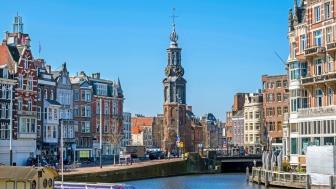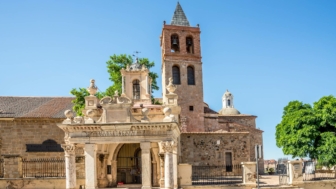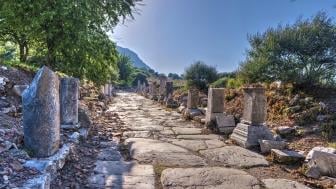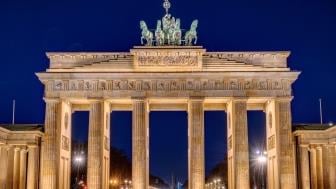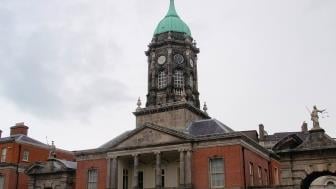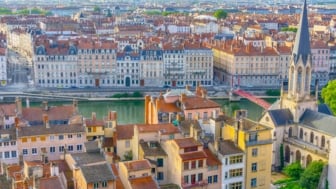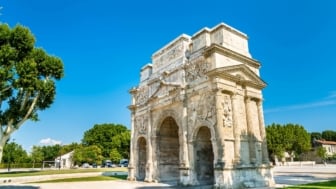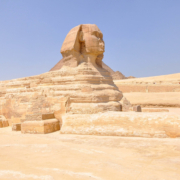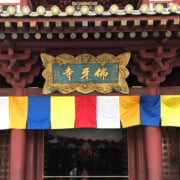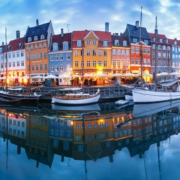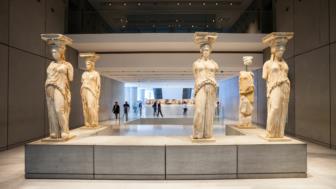Under the spellbinding shade of the Acropolis, close to the neighborhood of Thiseio, the beautiful quarter of Kerameikos is a genuine mix of mournful stillness and urban quirkiness. Head all the way down Ermou street to the northwest of the Acropolis and find a whole host of things to do in one of the most fun and culturally interesting areas of downtown Athens. Archaeology lovers and urban butterflies alike will love it!
Kerameikos Archaeological site
The name Kerameikos alludes to the original inhabitants of the area, who were ancient potters, first settling there around 3000 BC. The location was chosen because river Eridanos flowed through the neighborhood carrying away mud and clay, used in the production of pottery.
The site is better known, though, as a cemetery, which became the most extensive and important necropolis of Athens. Take a walk through the street of Tombs and discover the graves of the Athenian elite. You will be impressed by the elaborate sculptural decorations and the impressive marble stelae (grave markers). The original ones are in the small site museum or the National Archaeological Museum, so what you see outside are mostly replicas. Walk up the stone steps on the north side and take a moment to examine one of the best-preserved stelae depicting a little girl with her pet dog as well as the site’s largest stele, which shows sisters Pamphile and Demetria.

Visiting the site you will get the chance to see the relics of the Themistoclean wall built in the 5th century BC. You will also discover two tiny signs marking the foundations of two ancient gates. The first is the well-known Sacred Gate, which marked the end of the Sacred Way, the professional way that led to Eleusis. Ancient pilgrims walked this route to take part in the Eleusinian Mysteries, rites associated with fertility, agriculture and the worship of goddess Demeter. The other gate is Dipylon, the city’s main entrance and supposedly the largest gate of the ancient world. From here the Panathenaic Procession began every four years heading to the Acropolis, where the city’s patron goddess was honoured. In between the two gates, you will discover the remainders of the pompeion, the storehouse where all the necessary items for the conduction of the ceremonial processions were kept.
Don’t miss the chance to visit the small site museum. It hosts the original artifacts of lots of replicas that are shown around the necropolis, including grave reliefs and elaborate stelae, as well as significant findings from the graves, such as funerary urns and lekythoi. One of the most impressive and beautiful pieces of ancient greek art you will discover here is the bull from the grave enclosure of Dionysios of Kollytos, found near the Way of the Tombs.
Technopolis & Gas Museum
Leaving behind you the lush and tranquil site of the ancient cemetery, stroll down the pedestrian walkway that will lead your steps to the bustling Peiraios street. As you walk down Ermou, take a look at the colorful artwork on the walls of ILPAP building that houses the city trolleybuses. The street art pieces of Sive, Raiden, Apset, Jasone and Same84 will whet your appetite to explore the vibrant and colorful vibe of the area. Alongside Pireos street, the murals of INO will catch your eye and the emblematic stone chimneys popping up in front of you will welcome you to the old industrial quarter of Gazi.

So, what’s to see in Gazi? I suggest that you start with Technopolis, one of the most active hubs of the city. It has given new life to the old gas factory, which opened in 1857 by Theophile Feraldi and once used to illuminate the streets of Athens. Enjoy your juice, coffee or cocktail at the Gaz à l’eau café and, then, follow the Museum Path of the Industrial Gas Museum to discover stories of the gas factory and its workers. Head to the Old Retorts, the heart of the factory, where you will see a significant part of the industrial machinery as well as uniforms and tools of the workers.
The party’s been over and the days when the machines operated franticly are long gone, yet, surprisingly, you’ll still get to smell the distinctive odor of coal gas. Stroll around the industrial park and gaze at the imposing gasholders, where the gas was stored in large upside-down tanks. Two of them have been restored and converted into a radio station and a hub for entrepreneurship while the other one stands empty and crippled, evoking memories of the past. Before leaving, don’t miss the opportunity to enjoy an enchanting panorama of the city. Climb up the Observatory on the New Watergrass building and take in the dazzling view! If you are lucky, you might also catch some cool event as there are numerous gigs, exhibitions and festivals held in Technopolis.

Once you exit the Technopolis, you will encounter one of the largest and liveliest squares of the city. It is surrounded by dozens of bars, restaurants and clubs, spilled around the streets, their walls covered by bright-colored street art and graffiti, which adds to the overall youthful, party vibe of the neighborhood. The area, which 10 years ago was the heart of offbeat creative energy in Athens, today has evolved into a trendy meeting point for the Athenian youth. As in the case of many similar neighborhoods, where the art went, money followed, and soon nightlife and rising rents drove out the first wave.
By now, you might probably feel hungry… Leave behind you the bustling clamor of Gazi square and head to the cozy arms of Kanella. Kanella, meaning cinnamon in Greek, is a traditional family-style restaurant in Gazi, serving all the homemade and mumily delicious Greek classics. From the feta cheese with honey to the traditional soutzoukakia meatballs, you’re bound to love every bite you take!
And if you want to make the most of your time in Kerameikos and put everything in context, Clio Muse is there to help! Download the fascinating, self- guided audio tours Kerameikos tour: The “Elysian Fields” of Art and Discover the Industrial Gas Museum to experience the charms of the neighbourhood at your own pace.
That’s all for now. Take your time and enjoy it!





















